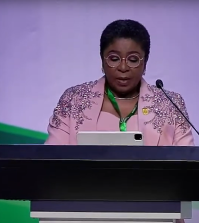Are you tracking how public money is spent, as well as how much?

Governments around the world are dealing with common issues that pose long-term risks to their financial sustainability – aging populations, raised expectations of government services, increasing cost pressures and revenue risks driven by lower economic growth. These budgetary pressures, along with rising levels of public debt, are expected to continue and could worsen in advanced and emerging economies.
As a result, policymakers globally are grappling with the need for more effective budget strategies to drive sustainable consolidation of costs and improve social outcomes.
Balancing unrelenting fiscal challenges while having to meet existing policy priorities and service delivery objectives is complex, particularly in the political decision-making environment. Successive governments over time can accumulate old or outdated programs, and multiple changes in government and political leadership can cause instability and inefficient delivery.
Periodic strategic assessment of the performance of services and programs, resource allocation and investment decisions, coupled with continual attention to operational productivity, can be highly effective tools to help manage political, macroeconomic and organizational priorities. For elected and non-elected officials alike, the key question is: how can this be achieved?
Strategic expenditure reviews offer systematic assessment of government performance
Strategic expenditure reviews objectively assess the effectiveness of public expenditure, and the alignment of resources to government-wide objectives. The focus is on critically evaluating the role of government, responsibilities and prioritization of resources. It is distinct from a tactical approach, which focuses wholly on efficiency of government spending.
Expenditure reviews can be conducted on a whole-of-government basis or be specific to a particular agency, policy, program or expenditure area. Such reviews are most effective when critical questions are addressed through a robust evidence base.
Strategic expenditure and performance reviews provide governments with an evidence-based means to inform difficult decisions about how best to reduce expenditure, reprioritize resources in line with government objectives and identify areas that require investment to achieve outcomes and priorities.
Three steps for an effective strategic expenditure and performance review
The success of public sector expenditure and performance reviews depends on critical activities and decisions established through strong political leadership, robust and transparent governance, and expert administrative execution. Leaders need to clearly define a strategic review’s purpose and the roles and responsibilities of those conducting it. In EY’s experience, success rests on several critical factors in each of the three major review phases: design, diagnose and deliver.

Design
To set up an expenditure and performance review for success, sound review design and governance measures are critical. This is a review for the big picture – to evaluate and improve the long-term effectiveness of government service delivery. As a result, it is crucial to set the preconditions for the review and identify the right parameters to keep the review strategic. In our experience, the following steps should be fulfilled in the design phase:
- Establish a robust governance structure that holds review teams and line agencies to account
- Secure executive endorsement of the objectives, principles and approach
- Define clear objectives, principles and a consistent framework
- Design the approach and methodology
Diagnose
This phase involves the heavy-lifting of undertaking the review and offering recommendations to government for action. Once the scope and structure of the review has been established, and the objectives set, the review steering committee should engage the review team, including any independent advisors and agency resources, to perform the review. There are several key success factors in this stage of the review process, including:
- Engage the right talent and resources
- Develop an evidence base through primary research
- Analyze evidence and develop action-oriented findings
Deliver
The third phase of the review process focuses on delivering the changes and results in a sustainable manner. With the ultimate purpose of a strategic expenditure and performance review being to actually deliver benefits, driving decision-making and implementation in this phase is the proof point of an effective review.
- Select a set of strategic reforms
- Progress select reforms to implementation
- Measure progress on reform and capture benefits
This article was written by Mark MacDonald, EY Global Public Financial Management Leader.
To read the full report on how to perform an effective strategic expenditure and performance review, complete the form below.

















